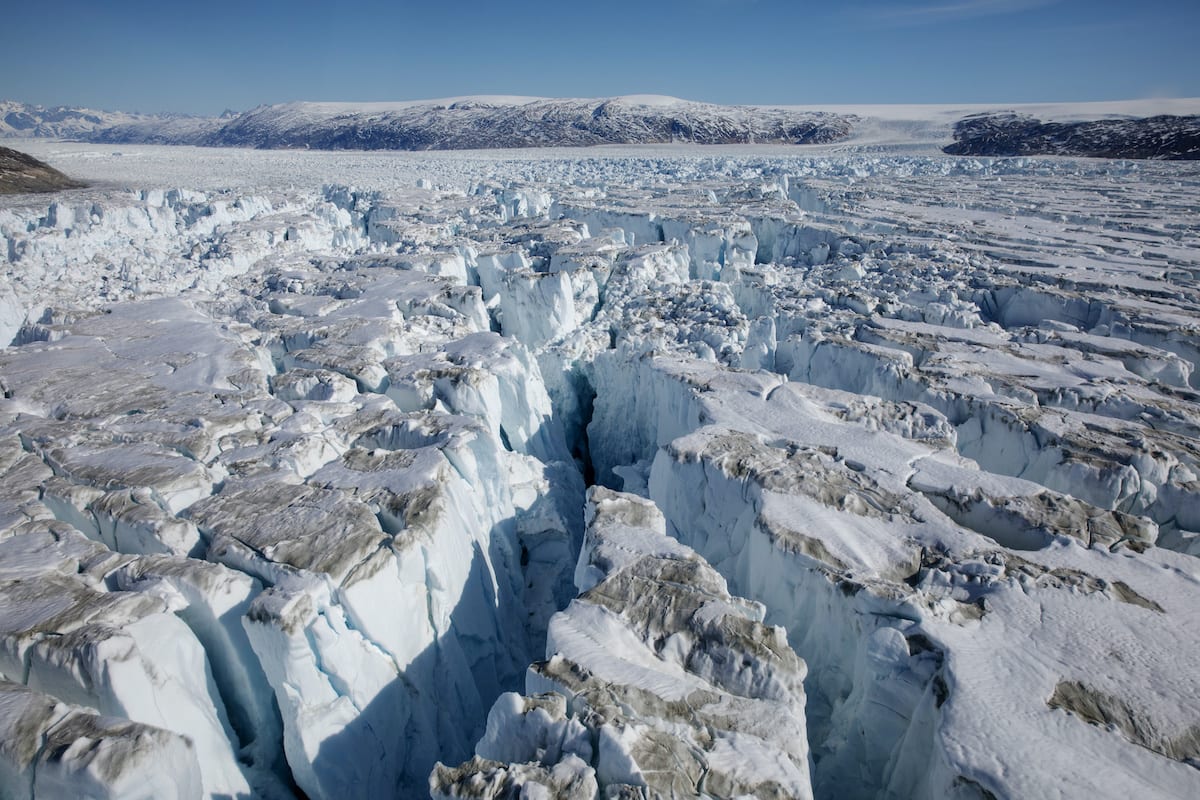FILE PHOTO: Crevasses form on top of the Helheim glacier near Tasiilaq, Greenland, June 19, 2018. REUTERS/Lucas Jackson/File Photo
By Eric Roston (Bloomberg) –As the summer melt season reaches its peak, the largest Arctic ice shelf has jettisoned a piece of ice twice the size of Manhattan.
The Geological Survey of Denmark and Greenland reported on Monday that the Northeast Greenland Ice Stream has lost more than 19 square miles (50 square kilometers) for the second year in a row. The giant glacier has now been reduced by 60 square miles in the past two decades.
Ice shelves are a barrier that prevent land-based glaciers from sliding into the ocean, where they go on to melt and contributed to rising sea levels. When those structures weaken and disintegrate, as the Northeast Greenland Ice Stream has now done, glacier movement picks up.
“Using almost 30 years of satellite data, we see speed up in the glacier flow over the past decade,” said Anne Solgaard, a research scientist at the Geological Survey of Denmark and Greenland in a statement. The current disintegration is only part of the problem, she noted, with acceleration measured upstream also “indicating a large-scale change to this huge glacier.”
Northeastern Greenland has warmed by about 3°C since 1980, and both this year and last have brought record-breaking heat. The Arctic has long faced the onslaught of rising temperatures, and the effects are only intensifying. As nations court new shipping and fossil-fuel exploration opportunities, scientists warn that summertime Arctic sea ice may only have years left.
In another sign of the dramatic shift happening as the Arctic rapidly warms, a study published in journal Nature Climate Change on Monday found that the region’s ice has departed its prior climate period and is entering a new one, a process that might have kicked off as far back as 2000. The findings suggest that Arctic temperatures have entered a new normal, with rain and snow patterns expected to break with the past.
A major break in an ice stream that drains 16% of Greenland’s inland ice is only the newest symptom of the Arctic’s new climate. “We should be very concerned,” said Jason Box, another research professor at the Geological Survey of Denmark and Greenland.
© 2020 Bloomberg L.P

 Join The Club
Join The Club











